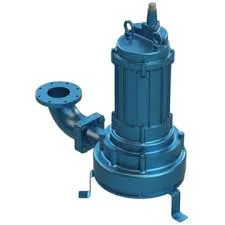English
- Afrikaans
- Albanian
- Amharic
- Arabic
- Armenian
- Azerbaijani
- Basque
- Belarusian
- Bengali
- Bosnian
- Bulgarian
- Catalan
- Cebuano
- Corsican
- Croatian
- Czech
- Danish
- Dutch
- English
- Esperanto
- Estonian
- Finnish
- French
- Frisian
- Galician
- Georgian
- German
- Greek
- Gujarati
- Haitian Creole
- hausa
- hawaiian
- Hebrew
- Hindi
- Miao
- Hungarian
- Icelandic
- igbo
- Indonesian
- irish
- Italian
- Japanese
- Javanese
- Kannada
- kazakh
- Khmer
- Rwandese
- Korean
- Kurdish
- Kyrgyz
- Lao
- Latin
- Latvian
- Lithuanian
- Luxembourgish
- Macedonian
- Malgashi
- Malay
- Malayalam
- Maltese
- Maori
- Marathi
- Mongolian
- Myanmar
- Nepali
- Norwegian
- Norwegian
- Occitan
- Pashto
- Persian
- Polish
- Portuguese
- Punjabi
- Romanian
- Russian
- Samoan
- Scottish Gaelic
- Serbian
- Sesotho
- Shona
- Sindhi
- Sinhala
- Slovak
- Slovenian
- Somali
- Spanish
- Sundanese
- Swahili
- Swedish
- Tagalog
- Tajik
- Tamil
- Tatar
- Telugu
- Thai
- Turkish
- Turkmen
- Ukrainian
- Urdu
- Uighur
- Uzbek
- Vietnamese
- Welsh
- Bantu
- Yiddish
- Yoruba
- Zulu
Telephone: +86 13120555503
Email: frank@cypump.com
Aug . 15, 2024 04:41 Back to list
Understanding Different Types of Slurry Pumps for Various Industrial Applications and Their Features
Understanding Slurry Pump Types A Comprehensive Overview
Slurry pumps are vital components in various industrial applications where the transportation of mixtures of liquid and solid particles is required. These pumps are specifically designed to handle abrasive and high-viscosity materials such as ores, sand, coal, and waste products. The selection of the appropriate type of slurry pump is crucial for achieving operational efficiency and reliability. This article will explore the various types of slurry pumps and their unique characteristics.
1. Centrifugal Slurry Pumps
Centrifugal slurry pumps are the most commonly used type in many industries due to their ability to move slurries consistently and efficiently. These pumps operate by converting rotational kinetic energy, provided by the pump’s impeller, into hydrodynamic energy. The impeller generates a centrifugal force that propels the slurry through the pump. Centrifugal slurry pumps can handle a wide range of solids, making them versatile for applications in mining, wastewater treatment, and more.
Centrifugal pumps can further be divided into two categories horizontal and vertical. Horizontal centrifugal pumps are typically used for transporting slurries over long distances, while vertical centrifugal pumps are ideal for applications where space is limited, as they can be submerged in the fluid.
2. Positive Displacement Slurry Pumps
Unlike centrifugal pumps, positive displacement slurry pumps work by trapping a fixed amount of slurry and forcing it through the discharge pipe. This type of pump delivers a constant flow rate, regardless of pressure changes. Positive displacement pumps are especially effective for handling highly viscous slurries or those containing large solids, as they can maintain consistent pressure and flow.
Common types of positive displacement slurry pumps include gear pumps, diaphragm pumps, and peristaltic pumps. Gear pumps use rotating gears to draw in and expel the slurry, while diaphragm pumps use a flexible membrane to create suction and discharge. Peristaltic pumps, on the other hand, utilize a series of rollers to compress a tube, creating a vacuum that moves the slurry forward.
slurry pump types

3. Submersible Slurry Pumps
Submersible slurry pumps are designed to operate underwater, making them ideal for applications in sewage, mining, and dredging operations. These pumps are highly effective for handling heavy slurries without the need for a suction lift, as they can be placed directly in the slurry being pumped.
Submersible pumps are often constructed from robust materials to withstand corrosive and abrasive conditions. They can be equipped with features such as agitators to keep the solids in suspension, ensuring efficient pumping. Moreover, submersible pumps are space-saving solutions in applications where above-ground pumps are impractical.
4. Wear-Resistant Slurry Pumps
In environments where the slurry contains highly abrasive particles, wear-resistant slurry pumps are essential. These pumps are designed with special materials, such as hardened alloys and rubber linings, to extend their lifespan and reduce maintenance costs.
Wear-resistant slurry pumps can be centrifugal or positive displacement types and are commonly used in mining, mineral processing, and other heavy industries where abrasive wear is a significant concern.
Conclusion
The choice of slurry pump type significantly impacts operational efficiency and equipment longevity. Understanding the characteristics and applications of different slurry pumps—centrifugal, positive displacement, submersible, and wear-resistant—is key to selecting the right pump for specific needs. The right pump not only enhances productivity but also ensures that the system operates smoothly, minimizing downtime and maintenance costs. As industries continue to evolve, the advancement in slurry pump technology will undoubtedly lead to more efficient and durable solutions for handling challenging materials.
-
ISG Series Vertical Pipeline Pump - Chi Yuan Pumps Co., LTD.|Advanced Hydraulic Design&Energy-Efficient Solutions
NewsJul.30,2025
-
ISG Series Vertical Pipeline Pump - Chi Yuan Pumps Co., LTD.
NewsJul.30,2025
-
ISG Series Vertical Pipeline Pump - Chi Yuan Pumps Co., LTD.|energy-efficient fluid handling&industrial durability
NewsJul.30,2025
-
ISG Series Vertical Pipeline Pump - Chi Yuan Pumps | Advanced Engineering&Industrial Efficiency
NewsJul.30,2025
-
ISG Series Pipeline Pump - Chi Yuan Pumps | High Efficiency, Energy Saving
NewsJul.30,2025
-
ISG Series Vertical Pipeline Pump-Chi Yuan Pumps|High Efficiency&Reliable Performance
NewsJul.29,2025










